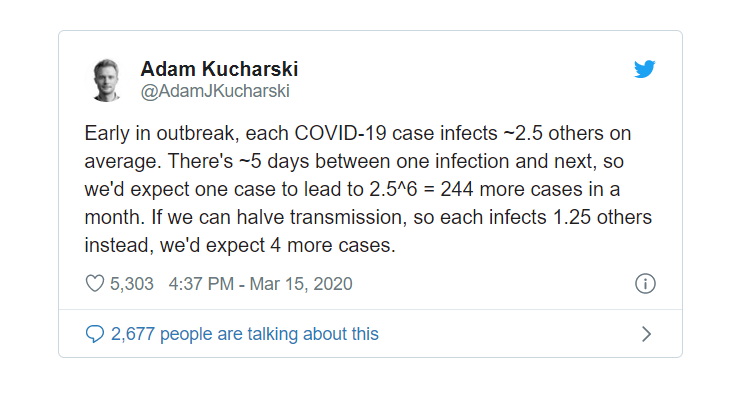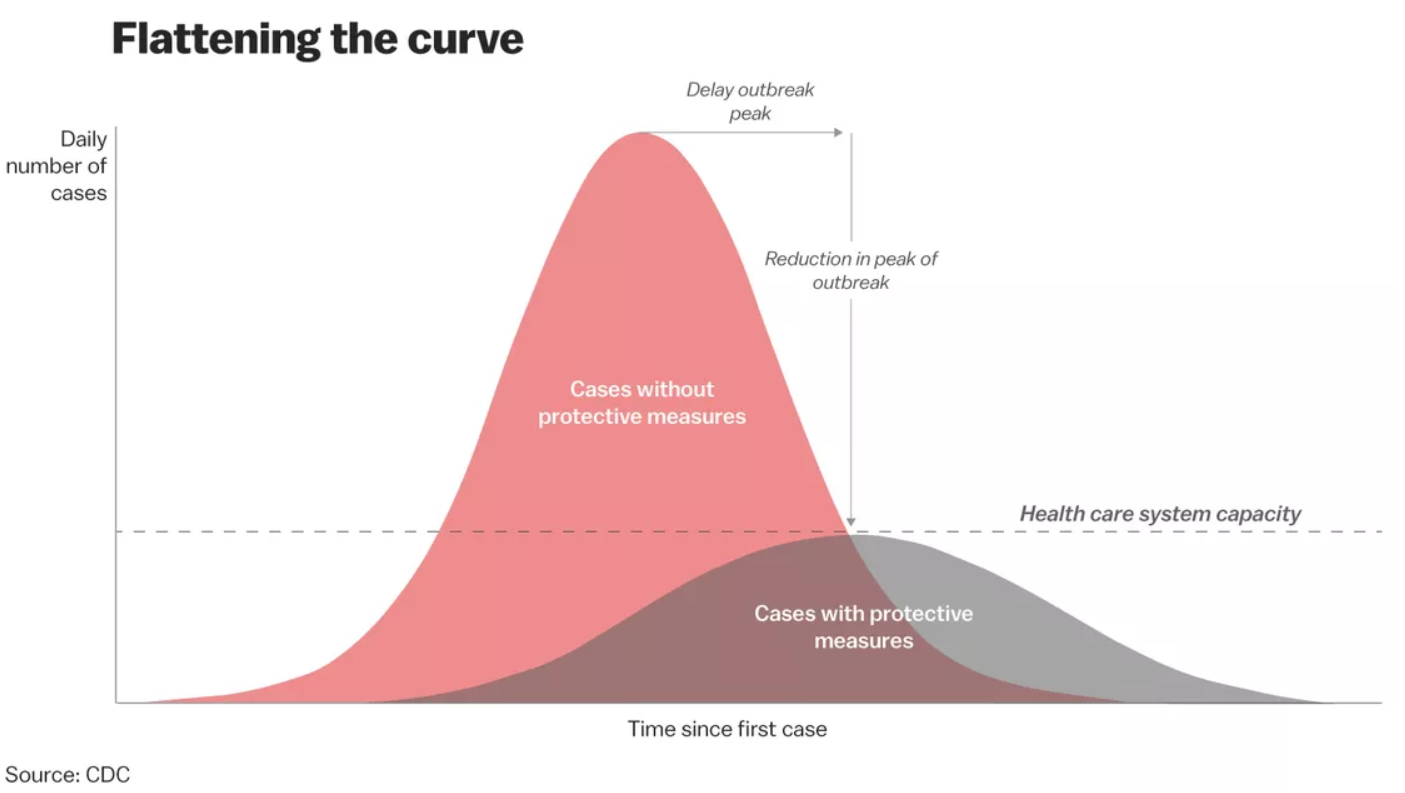-
Your shopping cart is empty!
Total : Rs. 0
The Logic behind why should we maintain social distancing during this difficult time.
A single case of coronavirus could lead to thousands more if we do not take precautions and maintain social distance.
Many countries in Europe and the United State are rigorously trying to slow the spread of the Covid-19 outbreak and are pleading their citizens to practice social distancing and good hygiene.
Cancellation of various religious gatherings, political gatherings, events and family gatherings, closing schools, and reducing visits to common spaces and businesses are simple but very powerful and effective strategies to control the disease transmission alongside testing to spot sick patients and isolate them from others.
And since coronavirus is already spreading locally in several communities, epidemiologists suggest that the measures will be most effective if taken in very early stages of the outbreak before community transmission when few people are infected and therefore the most lives are often saved. The disease becomes more dangerous if a country waits to implement such measures to community spread. The importance of very early measures also lies in the fact that the virus can spread much before an infected person shows symptoms.
Countries like China and Italy found this out the hard way when they experienced a massive increase in the number of Covid-19 infections and deaths overnight. It will be very difficult to break the chain of transmission if we reach into stage 3 of community transmission.
So, understand the logic behind it and practice social distancing from this moment onwards if you are not doing so.
Most of the countries hit by coronavirus exhibit an exponential growth trajectory of a number of cases. It means the rate at which the virus is spreading is proportional to the number of people who are infected. Each infected person can infect a particular number of individuals — around 2.5 immediately — who each successively continues to infect 2.5 more and so on unless drastic measures are taken to scale back social contact and isolate the infected from others.
Let us start counting doubles — 1, 2, 4, 8, 16, 32, 64,128 and so on. How many times you need to double the series to get 4 million? 100 times and so on.
So that’s why coronavirus appears to spread very slowly initially and then all at once at a very high rate due to exponential growth.

Individual actions can make a big difference in the current situation. Reuters (News organization company) showed how one coronavirus patient in South Korea had direct contact with 1,160 people and created the various new clusters of the transmission chain. We must learn the lesson and do our part to maintain social distance.
We know, coronavirus can’t spread exponentially like this forever. There are upper bounds to the population and people will start to build immunity to the disease as time will go by and the infected will start to recover. It is a natural process. When other disease outbreaks, there will likely be a peak and decline in the number of cases. But we can’t risk those many lives and need to take extreme measures to control it.
Therefore, it is very crucial to lowering that peak and spread out the number of cases as much as possible. That will provide valuable time for health providers and allow them to efficiently use the facilities like beds, test kits, and ventilators. So we can avoid being overwhelmed by patients and lack of resources. We will be able to save lives if we flatten the curve of a number of cases and use our resources very effectively to handle the situation.

Taking hard measures seems an overreaction to many people when only a few people in a city or state are infected. But, they must understand that these measures are most effective at a very early stage before community transmission.
Using data from Hubei province, China, where the virus originated and where the vast majority of the Chinese cases were seen, designer Tomas Pueyo posted on Medium a conceptual model he created showing the difference even one day of social distancing can make in reducing the number of cases.

According to an epidemiological model visualized by the New York Times, one scenario is with no interventions, the number of infections in the United States reaches 9.4 million. But with aggressive public health interventions starting today, that peak could fall to 3 million, according to the model. So the sooner such measures start, the larger impact they're going to have.
India is also taking hard measures at an early stage to stop coronavirus from spreading in communities. Prime Minister, Narendra Modi said the 14-hour-long 'Janta Curfew' on Sunday was just the beginning of a long battle against coronavirus outbreak, as he applauded the people for their united response to his appeal for social distancing.
PM Modi thanked people for expressing gratitude towards those at the forefront of the fight against coronavirus. "Today's Janta Curfew may end at 9.00 pm, but this does not mean we start celebrating. Janta Curfew is the beginning of a long battle. Today, the countrymen have proved that they are capable and once they decide they can together take on any challenge," he said.
So, as a responsible citizen of the country, we must follow the guidelines of the government and practice social distancing to do our part in this long battle.
